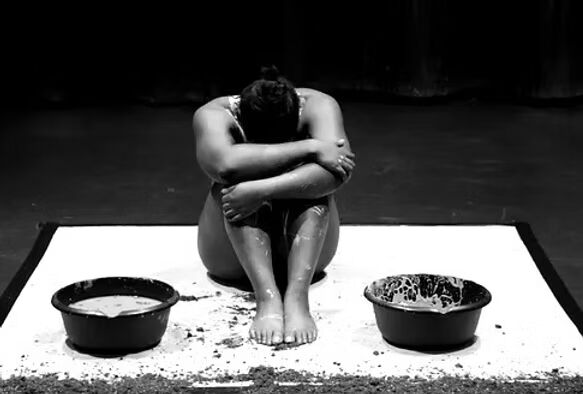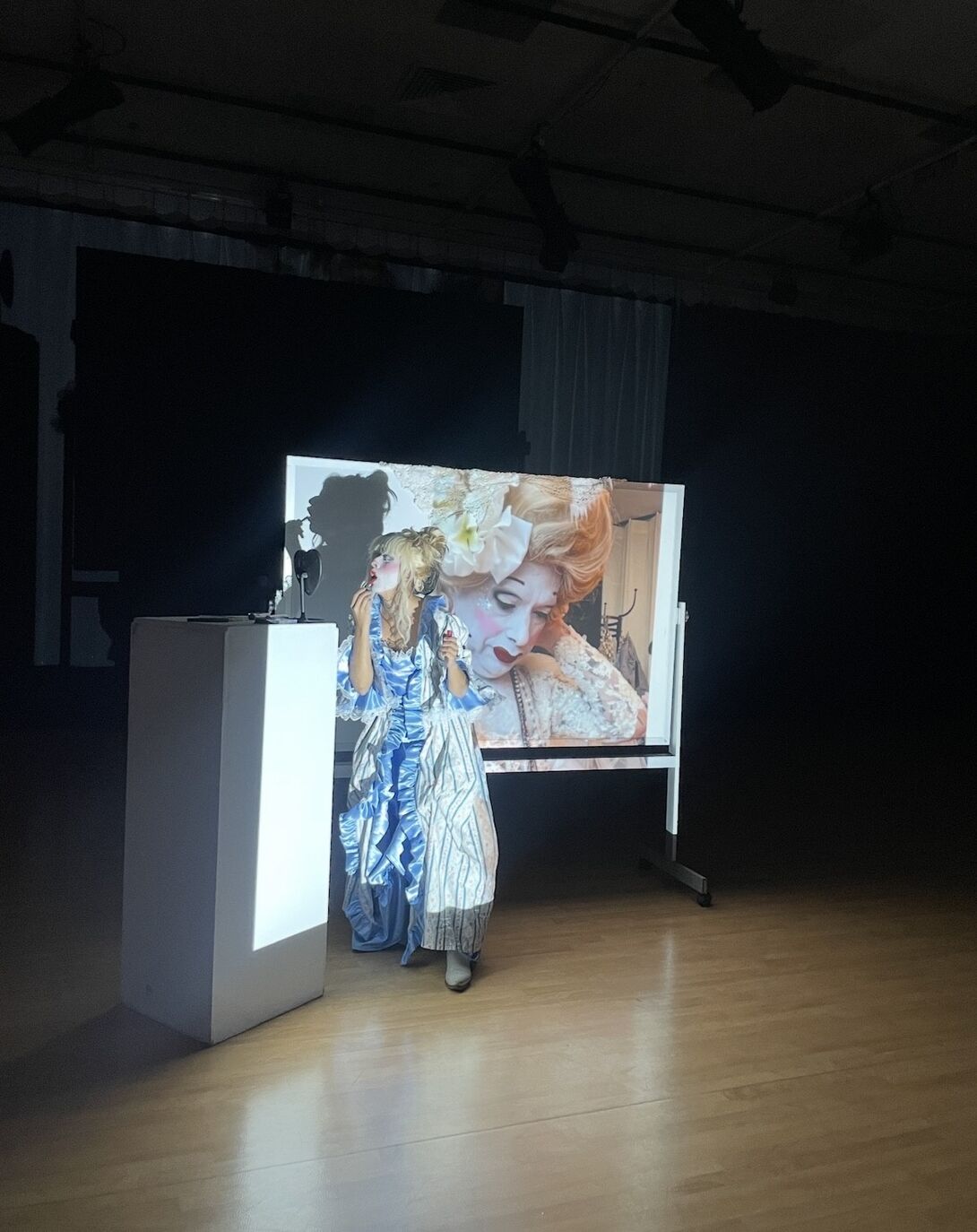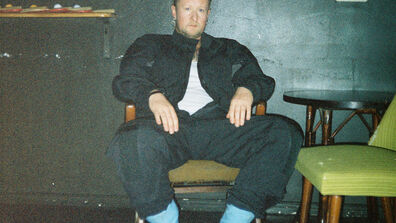
Image Courtesy of Caro Aceves
Class Spotlight: Encounters with the Past with Vanessa Macaulay
What if you could relive a moment of art history and make it your own? This fall, students at the School of the Art Institute of Chicago (SAIC) took on that challenge in Encounters with the Past, a bold and innovative course led by Assistant Professor Vanessa Damilola Macaulay. Through the lens of performance, they grappled with the question: how do you reframe, document, and reimagine iconic performance art pieces in novel ways?

Image from Between Stolen Breaths performance via Vanessa Damilola Macauley
In Encounters with the Past, historical moments become vessels of contemporary creativity. Students examined works by artists like Lorraine O’Grady, Genesis Breyer P-Orridge, and Kara Walker while visiting archives across Chicago, including SAIC’s own Joan Flasch Artist Book Collection. For the course’s midterm assignment, Macaulay tasked students with reinterpreting previous performances. They engaged in rigorous research to understand the original context of performances and explored creative ways to connect personally to the material while documenting their reinterpretations in innovative formats.
Macaulay’s goal was to dismantle barriers of bureaucracy and access around archival research. “Archives often feel distant or locked behind institutional barriers, but in this class, we reimagined them as living, breathing spaces. We looked beyond traditional archives—turning to personal narratives, oral histories, and speculative practices—to bridge the gaps and make what feels inaccessible deeply personal,” she said.
Drawing from her own research on the specific historical, cultural, and material circumstances of Black women and their bodies, Macaulay guided students to uncover and challenge the imbalances of intersectional identities through their own creative expressions.
Third-year performance student Star Castro reinterpreted Ana Mendieta’s visceral Untitled (Rape Scene) for their midterm. “Performance really became a home for me in the department,” Castro shared. “The material in performance is the body … the only hurdle is having the ability to perform in front of others.” Castro honored Mendieta’s body-based practice by recreating the piece through photography, echoing the original documentation. “Instead of taking a video, I tried to take a picture similar to how hers was documented,” they said.

Image Courtesy of Caro Aceves
Student Caro Aceves leaned on Chicago history in a performance piece for the class, honoring trailblazing club kid JoJo Baby. "JoJo has always played a central role in my work and practice, inspiring myself (and countless others) in creating absurd and extravagant drag," Aceves said. Aceves performed a drag number for the class against a projected video of JoJo Baby styling a wig. "The video chosen for this piece was one of the last livestreams she posted to IG before her passing in 2023. It shows her getting ready for a party she was chosen to host at none other than the Art Institute."
Re-performance is a delicate process, especially with sensitive works. “It’s about balancing respect for the original context with personal connection,” Macaulay noted. “Re-performance isn’t just about recreating—it’s an act of translation, a conversation across time. It allows students to step into the echoes of history and shape them into something new, forging connections between past and present.” Guided by one-on-one mentorship, students approached these projects with care and rigor. The course also challenged students to rethink how performances are documented. “Perhaps it’s an audio recording, the relic of the performance, or just the essence of the moment captured in a DIY space,” Macaulay said. Her own practice includes unconventional documentation methods, such as using soundwaves to record the essence of performances.
Macaulay’s philosophy reflects the department’s broader ethos of care and community. “Students flock to performance art knowing their presence is enough,” she remarked. This inclusivity allows students from diverse disciplines to explore performance as a bridge between historical and contemporary expression.
In practice, the class becomes a bridge between the past and the present; through their reinterpretations, students are empowered to shape the future. “I’m drawn to the gaps, the missing pieces, the traces that are forgotten about. That’s where imagination takes hold—where students can excavate, reconstruct, and create entirely new possibilities from those tiny crumbs left behind” said Macaulay.
